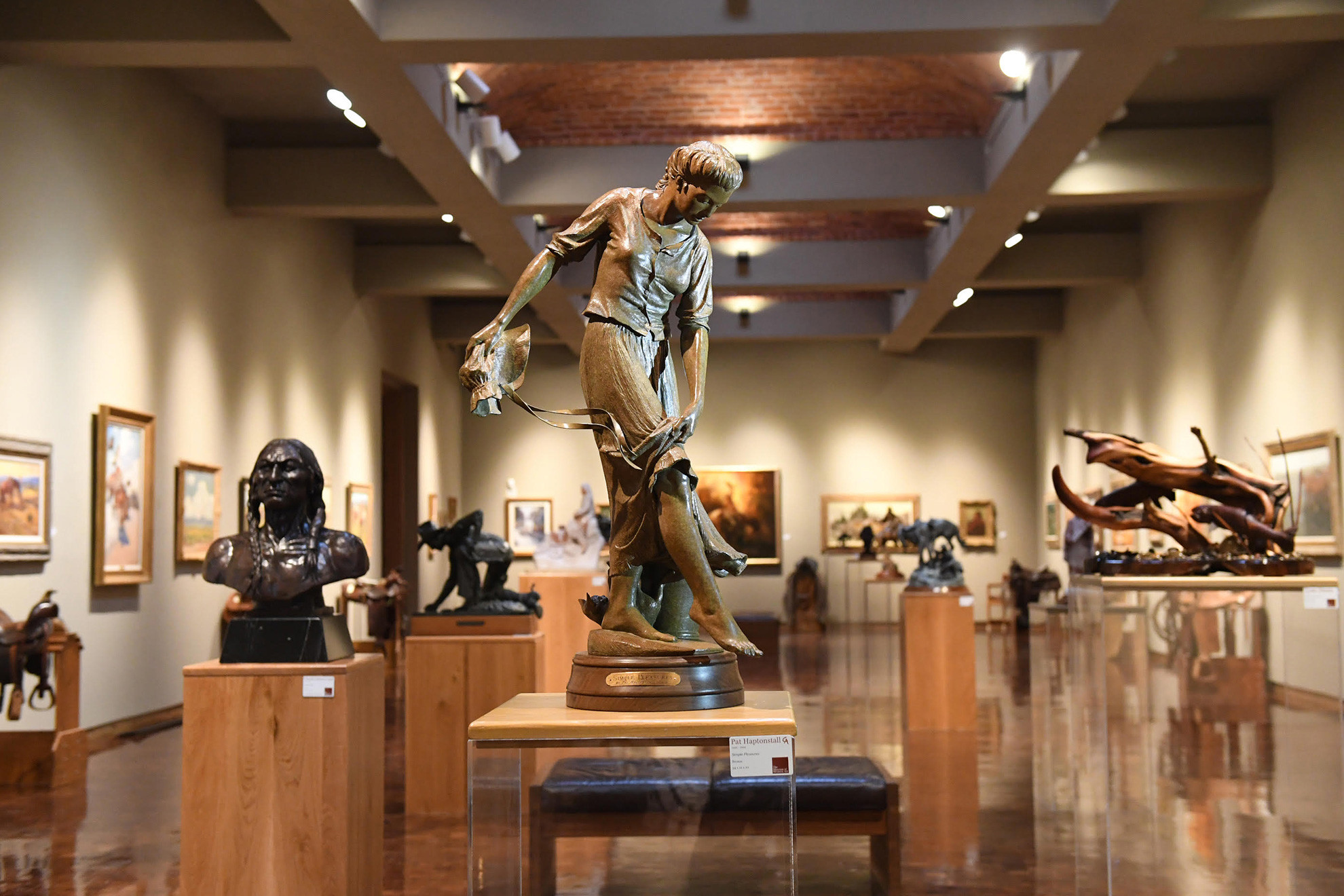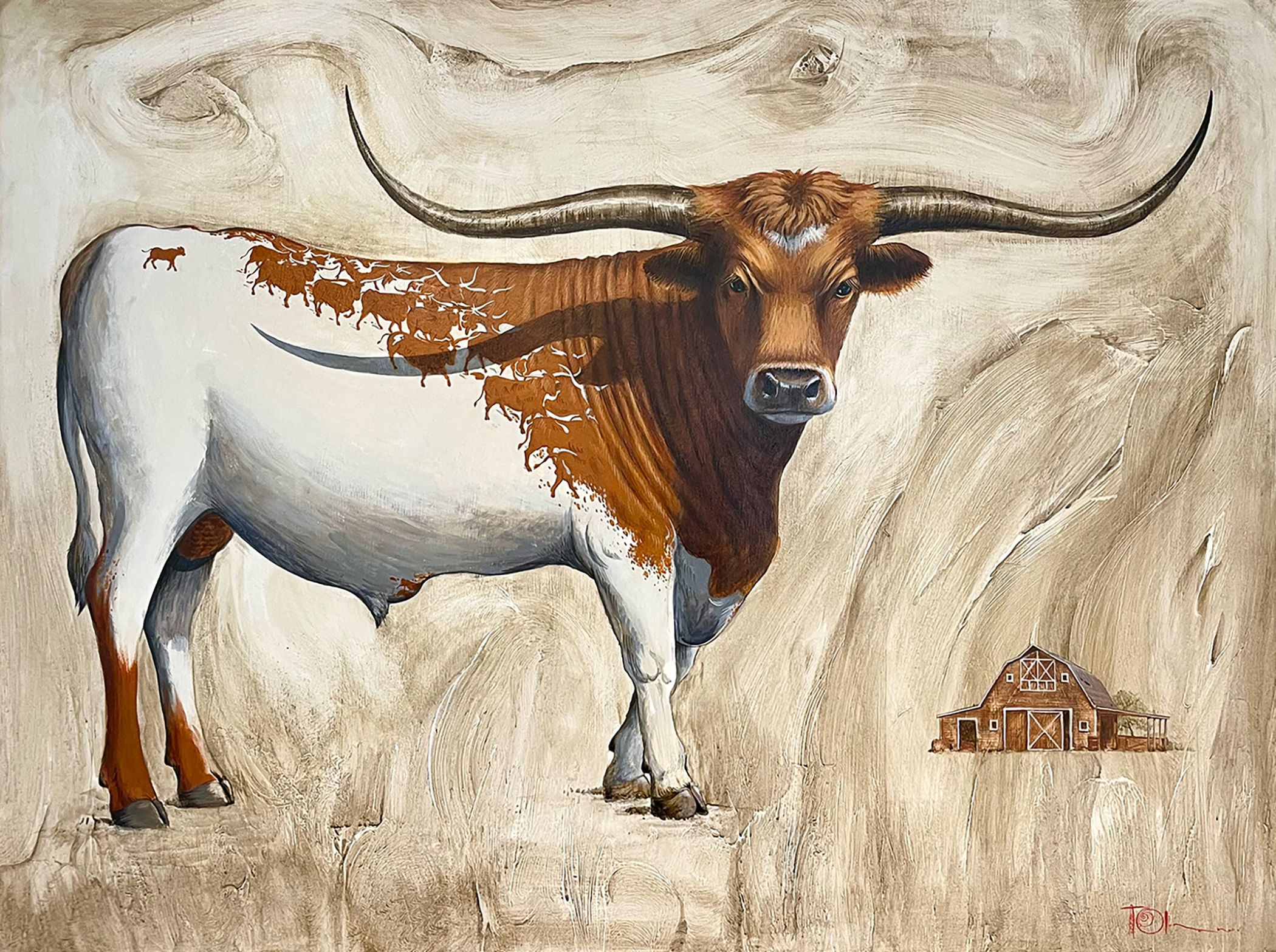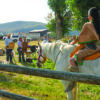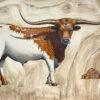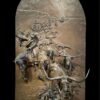A burst of color in a painting, particularly when placed against a moody background, is a delightful surprise. It is poetry; it is magic. Color can be as soothing as an ocean sunset, or it can knock your socks off.
While most of us appreciate a good black-and-white piece, we find color, when properly placed, leads our eyes along a route the artist has skillfully set for us.

Kevin Beilfuss
Sarah’s Diary
Kevin Beilfuss trained at the American Academy of art in Chicago, Illinois, and has been painting professionally for 26 years—13 as a freelance illustrator and 13 as a fine artist. He currently lives in Downers Grove, a suburb of Chicago. I use color as more of a design tool, a way to lead the viewer’s eye around the painting, or to create balance and unity within the painting.

Vicki Catapano
Little Coyote
California artist Vicki Catapano sold her first painting in 1973. Her training has been through books, classes, videos, workshops, and the exchange of ideas and thoughts with fellow artists, but personal observation, she says, is one of her greatest learning tools. “The best advice I have received regarding color, which I had heard from many artists, is the psychological effects of color and how the use of color should be used to activate an emotional reaction from the viewer.

Walt Gonske (New Mexico)
San Geronimo Apple Blossoms
Walt Gonske left New York City more than 40 years ago to live and work in Taos, New Mexico, where he and several other artists formed The Taos Six. “Rod Goebel, a member of The Taos Six, had the biggest influence on my own work. He could match color, value, and drawing to the landscape beautifully. “I spent a number of years going after accurate drawing, the right value, and color of the different forms in nature. It was wonderful learning how to apply those art school rules, when painting the landscape”

Shirley Novak
Sunny Meadow
Shirley Novak, who lives in rural southwestern Colorado, studied at Long Beach City College in California, the Scottsdale Artists School in Arizona, and the Art Students League in Colorado and has been painting for 25 years. “Color and flowers make me come alive; both are why I paint,” she says. “[I try to achieve] an emotional response for the viewer and to honor the beauty that is available to us in a garden.”

Don Sahli (Colorado)
Summer Signature
Colorado painter Don Sahli credits Russian painter Sergei Bongart with changing his life, when he apprenticed with him and watched him use “color and paint in a way that I had never seen before.” Sahli, who began to show his work professionally when he was just 16, says he was taught “not to paint, but to see, color and use it in an alla prima way—start to finish—plein air and in the studio with a flair for the bravura or spontaneous emotional approach.

Kent Wallis
Flowering Reflections
Utah artist Kent R. Wallis earned an MBA, but left the corporate world behind about 40 years ago to pick up a paintbrush. A self-taught artist, he was inspired by John F. Carlson, a painter and teacher at the Art Students League in New York in the late 19th and early 20th centuries. Color reaches all of us emotionally. It guides fashions; it guides architecture. We grow gardens with color in mind. It speaks of joy. I try to achieve an emotional connection with the viewer through color.
